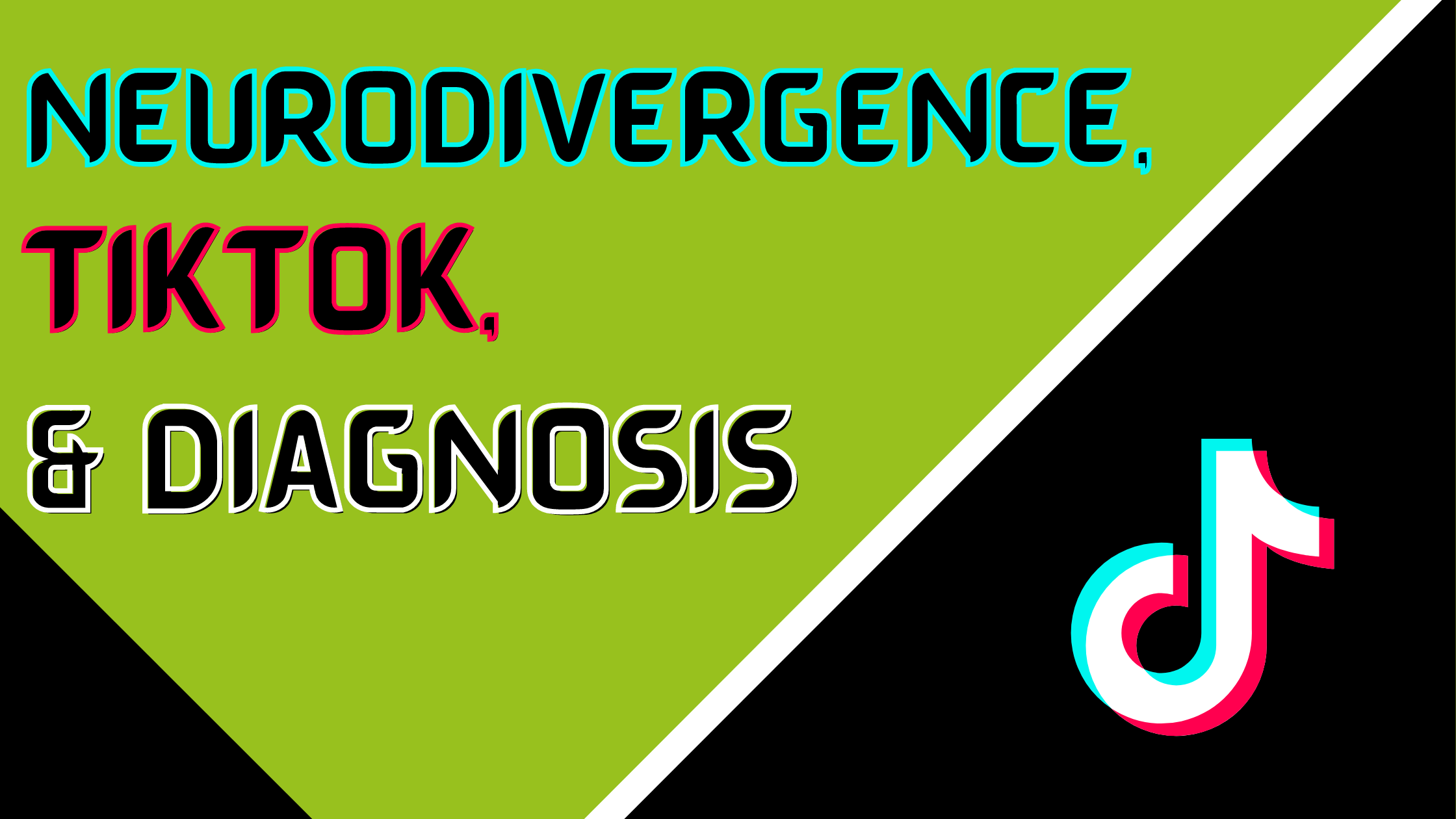So the TikTok Algorithm Says You Might Be Neurodivergent… You’ve Made It All the Way to Adulthood Without a Diagnosis… Now What?
TikTok has quickly become one of the largest social media and content platforms out there. Whether you create content, scroll through videos for more hours than you’d like to admit, or a combination of both, the TikTok algorithm has a (albeit scary) knack for bringing people from similar backgrounds together. My FYP (For You Page) somehow knows that I enjoy content about therapy and mental health, nature adventures, cozy indie video games, and cute animals. What if your FYP is offering videos about the neurodivergent lived experience? You relate, yet never received any kind of diagnosis growing up. What does neurodivergence even mean? And what do you do now?
What is Neurodiveristy and Neurodivergence?
“Neurodiversity” is a term created by Judy Singer, an autistic sociologist. This term recognizes that human minds are diverse and acknowledges a spectrum of brains from neurodivergent to neurotypical. Neurotypical does not mean “normal” or “healthy” and one is not better than the other. However, our society’s design benefits the wants and needs of neurotypical people, which can make living as a neurodivergent person difficult in a variety of ways.
“Neurodivergent” is a term created by Kassiane Asasumasu, a neurodivergent activist. This is an umbrella term that can describe individuals with brains that are different than those of neurotypicals’. Neurodivergence can occur due to acquiring it through experiences, genetics, or it being an innate part of you. The “neurodivergent umbrella” includes ADHD, Autism, learning disorders, PTSD and C-PTSD, personality disorders, sensory processing disorder, and more. In addition, just as “neurodivergent” can mean different things, every person’s experience with a neurodivergent mind is unique, even if they have the same diagnosis.
TikTok is Not a Diagnostic Tool
It can feel wonderful to find a group of people that you relate to. It is powerful to watch a video and be able to say, “Oh my gosh! I’ve never been able to relate more!” Since the start of the pandemic, many individuals have had this experience while scrolling through TikTok in a variety of communities. If you have had this experience while watching a video by a neurodivergent creator, please keep in mind that the content on TikTok is not a diagnostic tool.
To receive a professional diagnosis, a mental health professional must use the DSM-5-TR and evaluate if you fit the diagnostic criteria. Now, is the DSM-5-TR problematic in multiple ways? Yes. Does this include that some of the diagnostic criteria is based on research that only used samples of mostly white, straight, male individuals? Yes. Is it the tool that our current mental health system and insurance companies use so people can gain access to treatments? Also yes. However, I caution you against using TikTok as your only source of neurodivergent education, as misinformation is also common. Many neurodivergent mental health professionals have published books, articles, and other resources that have a wealth of valuable information.
When considering your next steps… If you choose to pursue diagnosis and treatment, it is important to consider what you hope to gain from a diagnosis. Therefore, we must consider what kind of diagnosis you may want.
Professional v. Self-Diagnosis
Self-diagnosis is a valid form of diagnosis. Especially in a world where mental healthcare is inaccessible to many, professional assessments are expensive, not all mental health professionals are adequately educated on neurodivergence, and racial and gender biases can influence assessments. For example, BIPOC (Black, Indigenous, and people of color) and people assigned female at birth (AFAB) are less likely to be diagnosed with autism. They are also more likely to be misdiagnosed or not diagnosed at all. This can lead to treatment that doesn’t actually address what the individual wants or needs. If you have any of these concerns for yourself, you are valid in educating yourself and coming to the conclusion that you are neurodivergent. However, if you are looking to access resources, medication, or accommodations in settings like college or the workplace, then you may want to consider a professional diagnosis.
A professional diagnosis can come from a variety of mental health professionals. At Individual and Family Connection, we can evaluate for some neurodivergencies; otherwise, we would refer you to a neuropsychologist in the local area to complete a neuropsychological evaluation. This process can take several months, and you will likely meet with the neuropsychologist for a few hours-long sessions. Typically a month or so after the evaluations, you will sit down with the neuropsychologist to discuss their conclusions. You will also receive a written report detailing their findings and recommendations. If you already have a therapist, we recommend that you have your therapist and neuropsychologist communicate throughout this process.
Whichever path you choose, therapists at Individual and Family Connection are here to support you.
Connecting with a Therapist
Therapists can assist you in better understanding yourself, seeking professional diagnosis, and pursuing accommodations. We can also help you learn and apply functional, accessible tools or systems to support your unique needs and strengths. Additionally, we understand that going undiagnosed and being misunderstood by those around you may have caused you harm. We know that traumatic events can also cause neurodivergence in the brain. We are here to provide a safe space for you to process those events and their impact when you are ready. Living with a beautifully neurodivergent mind in a world structured for neurotypical brains can be challenging. You do not have to go it alone.

